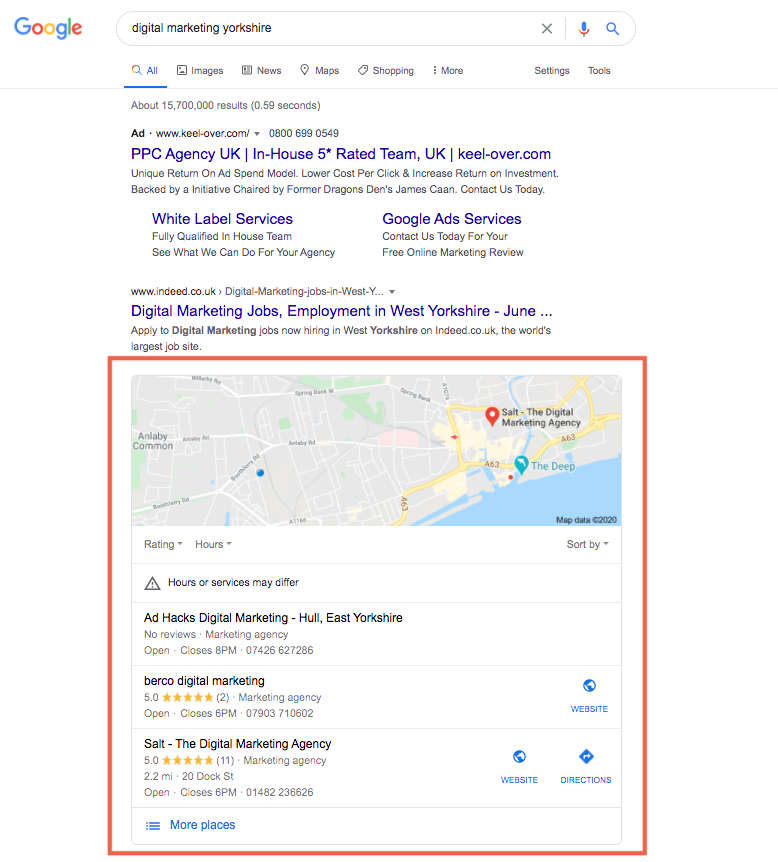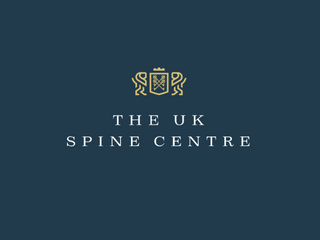It probably seems like a distant memory – opening Google to search for a local takeaway on your way home from the pub. Or searching for that last-minute birthday present walking up and down the high street. But, the only reason you’re able to find those places is because of local SEO. With the imminent prospect of non-essential stores being open from June 15th now couldn’t be a better time to focus on this. Potential customers are using search engines to find local products and services. 46% of all Google searches are focused on seeking local information and of those searches, 72% of customers end up visiting the stores within 5 miles.
We take a look at what Local SEO is and what you can be doing to make the most of your online presence to drive in-store visits and revenue.
What is Local SEO?
Local SEO focuses on undertaking optimisation to rank higher in your local area for the products or services you offer. It’s the process of optimisation across all local opportunities – not just Google – including Bing, Apple Maps, Yelp. Local SEO is treated differently to ‘regular SEO’ because Google uses unique factors to rank local SEO listings, including:
- A users location
- NAP citations (Business Name, Address, Phone)
- Number of location check-ins
- Google My Business presence
- Keywords used in Google My Business profile
- Online review sentiment
- Google Maps star rating
- Shares on social media
When you focus on optimisation of your website for SEO alongside optimising for local, you get the opportunity to appear in both the ‘normal’ results and what Google calls ‘the snack pack’.

The Snack Pack is the area which appears on the first page of Google once a user searches for a local product or service. It displays the 3 results deemed most relevant for the user. In a study of 200 clicks, it was identified that 33% of users select a listing in the snack pack. Therefore making it a very fruitful place to be!
What can I do to optimise for Local SEO?
Optimise your site for mobile
Typically searches for local products and services happen when users are out and about, they need fulfilling instantly. That means mobile is extremely important for Local SEO. You can check how mobile-friendly your website is here, with Google’s Mobile-Friendly Test tool.
Once you’ve checked the mobile-friendliness of your website and are sure that once people land on it they can find exactly what they need, you should focus next on your keyword research. Searches which contain ‘near me’ or ‘close by me’ have increased by 900% over the previous 2 years. Optimise your site and create content for those searches but also include useful information in your optimisation. Information such as opening times, how long it takes to get to your business, your phone number etc. Services in location (SIL) is really important. Combining your services with your location, for example, we would look at keywords like ‘digital marketing agency Yorkshire’. If you’re struggling to think about what your potential customers might search for, use Google’s auto-complete, and review the list of queries underneath, picking out the most relevant ones.

Claim and optimise Google My Business
Next, make sure you have claimed and optimised Google My Business. This is a complete no-brainer as far as we’re concerned and it’s incredible how many businesses haven’t yet claimed their Google My Business. Google My Business is a free tool used to manage your online presence within Google. The handy thing is that this also includes maps and search, all in one place. Having this in place allows you to manage how your business appears in search and also allows you to update important information like opening times and phone numbers, so users see it right at the point they’re searching for your product or services. Whilst you’re at it, you might as well create your Bing Places (Bing’s equivalent of Google My Business). Linking to your Bing Places from your Google My Business will sync all of the information so you don’t have to do it twice! Finally, claim and optimise your Apple Maps Listing.
Check and create new citations
Once you’ve set up your business listings, look at optimising citations – one of the most important areas for local SEO. Citations are mentions of your business, for example, business name, address, phone number (NAP). NAP comes in 2 forms:
- Structured citations – where NAP is presented visually-structured, such as in business directories or social profiles
- Unstructured citations – where business information is listed in areas like blog posts
It’s important to ensure every citation online is correct, both within the areas you own – your site, social profiles etc as well as across data aggregators. This could be a huge task but luckily Moz has created a tool you can use to check local listings quickly and easily. You can see this from the below screenshot example for Hertz York. Check it out for your own business here.
Once you’ve checked those are correct, start building out more to develop your local presence. Use a combination of well-known sites and some lesser-known ones. Here’s our starter for 10 below:
- www.yell.com
- www.thomsonlocal.com
- www.yelp.co.uk
- www.tripadvisor.co.uk
- www.scoot.co.uk
- www.hotfrog.co.uk
- www.locallife.co.uk
- www.freeindex.co.uk
- www.accessplace.com
- www.192.com
Optimise your homepage
So, you’ve worked on off-page elements such as setting up Google My Business and ensuring citations are correct. Now it’s time to optimise your site’s homepage, focusing on your primary location. This is important because Google wants to show the most relevant search results to its users – so although you may serve the whole of the UK, if you search on Google now for your business, we’re pretty sure it will show location-specific listings.
This shouldn’t be an arduous job, focus on areas like showing NAP information within the footer of your site, embedding Google maps on-site and displaying testimonials and reviews.
Take this one step further by adding schema markup for your location and business information. This helps show search engines what your website is about and makes it easier for them to read the information on the page. This, in turn, helps support rankings and domain authority of your website.
Build your local authority through link building
Everyone knows the importance of high-quality content to support ranking improvements and SEO however this can also help with your local listings. Link signals are the most important ranking factor for local organic results, according to one study by Moz. Focus on creating content which supports your local community and audience, for example, best of guides, local calendars or something more creative and topical that will resonate with your local audience. If your content is worth talking about, then you should receive links back to it which in turn will help your local SEO listings.
Summary
There is certainly lots to think about when developing and optimising your local presence. We hope we have given you a good starting point, but with all SEO, including local, it’s an ongoing task and you should continue to invest time to reap the benefits. Continue to track and report on performance, including contacts to your business or form completions to understand the impact your efforts are having on revenue.
As always, the Green Ginger team is happy to help or point you in the right direction for your Local SEO strategy. Just reach out to one of the team today!














